The year has had a banner beginning for Catherine Opie. She started the year with openings at Lehmann Maupin’s two spaces in New York. By the end of just January, she had another set of openings, in Los Angeles at MOCA Pacific Design Center and the Hammer Museum. The exhibitions spark a dialogue about portraiture from different perspectives, with photographs from Opie’s “700 Nimes Road” series, as well as a series of new portraits and landscapes.
“700 Nimes Road” is a group of photographs of Elizabeth Taylor’s home and belongings, taken over a period of six months. Instead of photographing the actress (who passed away in the middle of the project), Opie captured her closets, rooms, clothing, jewelry, artwork, and keepsakes. It’s an indirect, incredibly intimate portrait of Taylor and her life outside of the public eye.
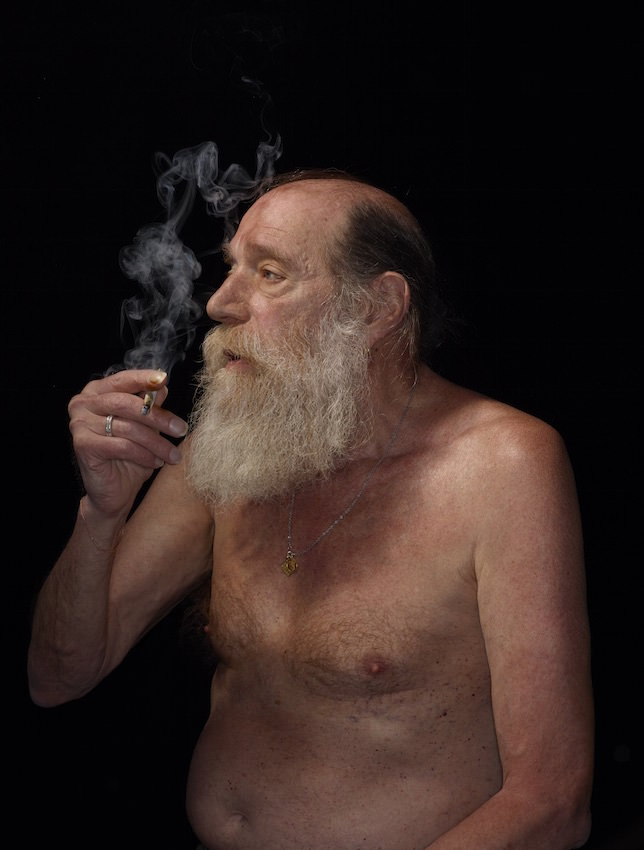
Catherine Opie
Lawrence
Whitewall spoke with the L.A.-based artist about that undertaking, and about her recent portraits of artists and friends set against a sober black backdrop. Opie talked to us about this different direction in her work and the question of where photography is today.
WHITEWALL: Let’s start with the Elizabeth Taylor project, “700 Nimes Road.” We read that it began because you shared an accountant with her?
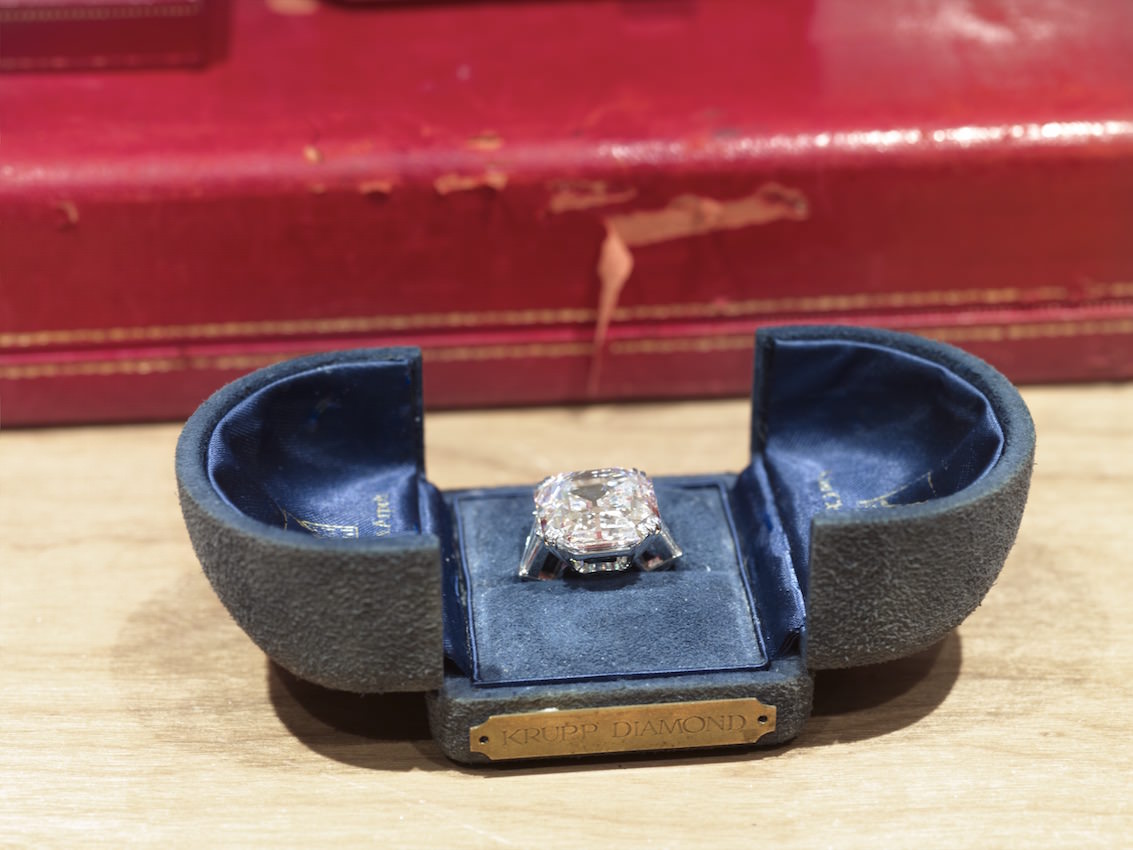
2012
Pigment print
CATHERINE OPIE: Yeah, we did, we really did. It’s such a funny story. For years Derek [my accountant] would say to me, “I have a client, Elizabeth Taylor, and if you ever thought of doing anything I would like to make the introduction.” It didn’t pop up in my mind right away. It percolated over about a three-year period. And then when I was making “Inauguration” and looking at Eggleston a lot and thinking about his “Graceland” [series], I said, “Okay, I think it would be interesting to create a portrait of her through her home.” She is so iconic as an actor and everybody knows her face, and it’s always about her beauty and her face. What happens with somebody who is so iconic and encapsulated in the heart of the world, as well as American cinema, when you look at the more private details of their life that people wouldn’t really have access to, which is the home?
WW: Who was Elizabeth Taylor for you personally?
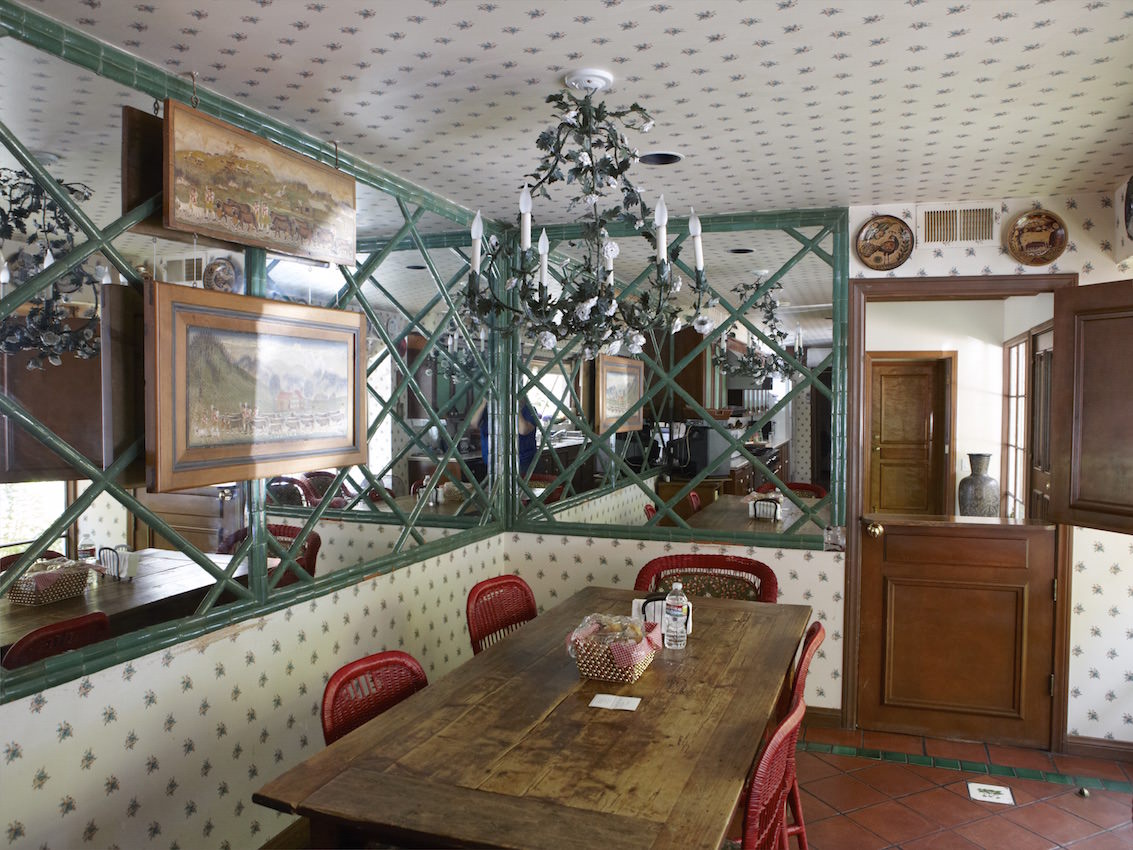
33 x 25 inches
© Catherine Opie
Courtesy of Regen Projects, Los Angeles and Lehmann Maupin, New York & Hong Kong
CO: Well, she was the movie star of Sunday mornings and winter mornings in Ohio when my mom and I would sit and watch her movies. My mom would just ooh and aah over how amazing she was. And then later on in my life, as I was an activist in ACT UP and Queer Nation, she became the first real outspoken person who was going to do something about the AIDS epidemic, which decimated my community and my friends.
So at first she was the woman on my television screen with my mom telling me about how fantastic an actor she was, and she shared a spot with Doris Day and Shirley Temple in my Sunday movie rotation. [Laughs] And then, you know, what she did in terms of AIDS and her activism, I don’t know if I would have done this body of work if it wasn’t for her really being a part of the movement in that way.
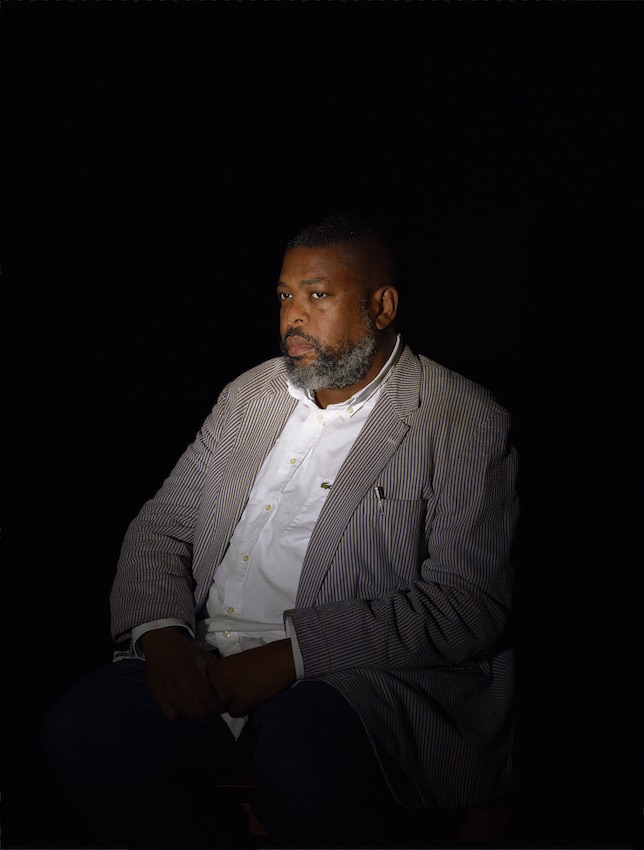
Catherine Opie
WW: And that really was a huge part of her life.
CO: It was really important to her. The fact that she was able to make Ronald Reagan say the word “AIDS” . . . And I don’t know if he would have stepped up in any way—not that he stepped up in a major way—but stepped up in any way without Elizabeth there by his side going, “This is ridiculous. This is wrong.”
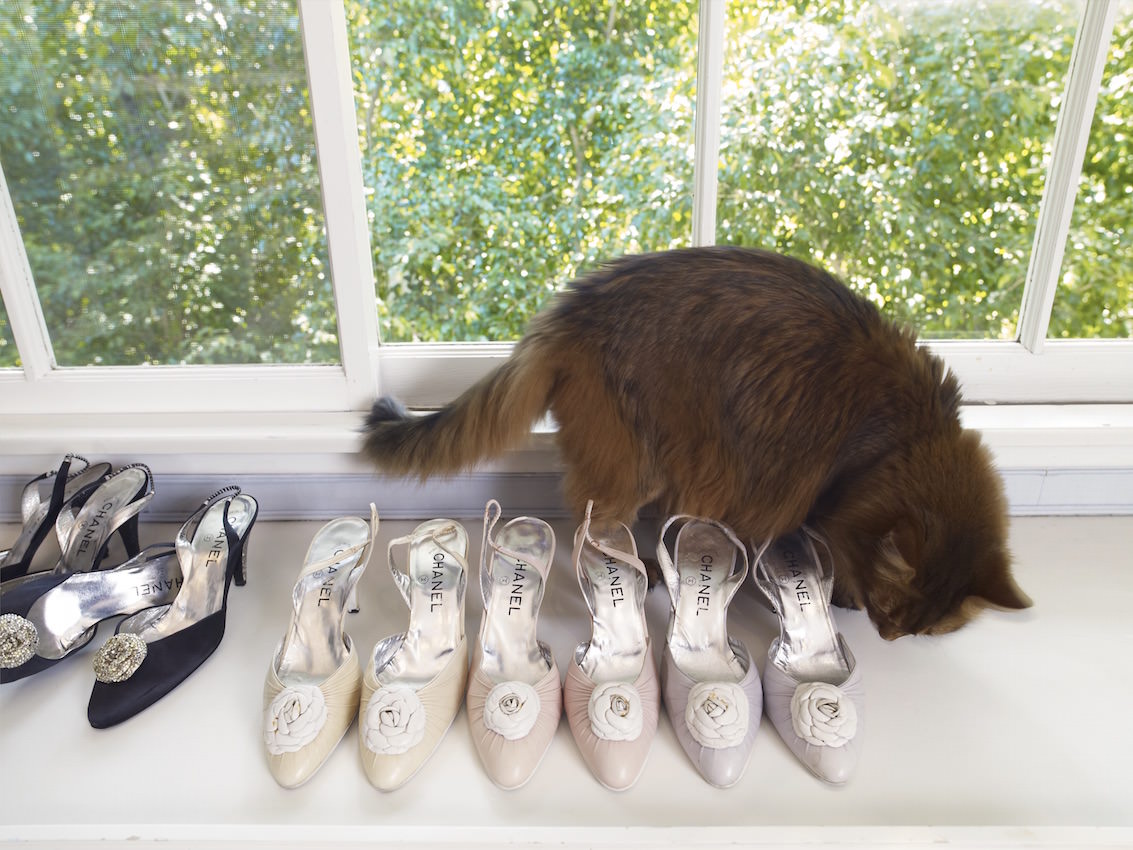
Krupp Diamond
WW: And her foundation is still very active, after her passing.
CO: Yes, her foundation is completely active. I’m one of the friends of the foundation. I’m really excited that of the work I made in her home, prints go out every once in a while for fundraisers and we’ve been able to raise over half a million dollars for the foundation. The trust is happy, the foundation is happy, I’m happy. It was intense to have her pass away in the middle of making it, but then it became really pertinent in terms of the fact that it was of the last moments of her home.
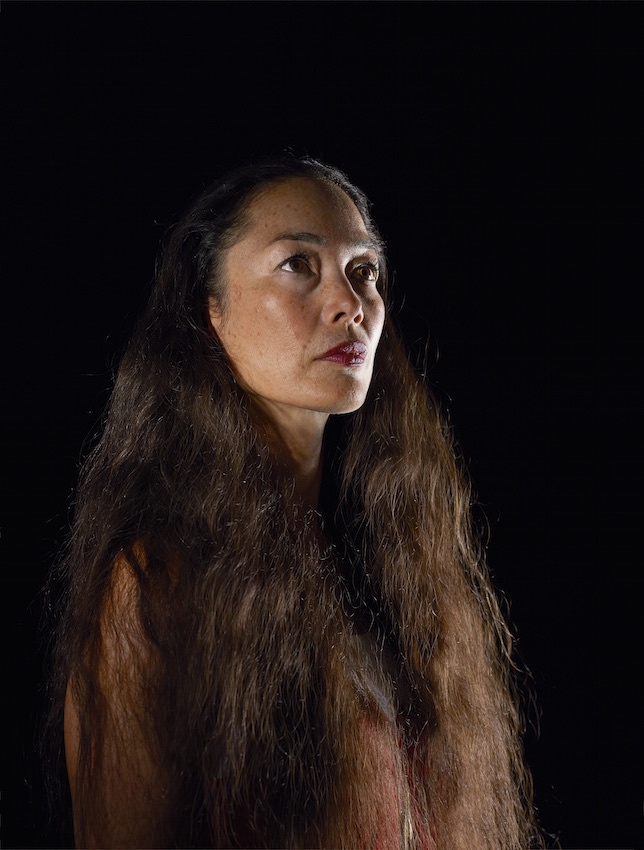
2010-2011
WW: Since her passing, her executive assistant has said that he better understood why she agreed to the project, as in she must have known she was dying.
CO: Yes. I mean, she wasn’t one hundred percent, that’s for sure. She was ailing. Before she was hospitalized they were all excited because I was going to be finally able to make the photograph of all the trunks in the foyer before she traveled. I guess she packed like 17 or more Louis Vuitton bags that would go in the foyer, waiting to be loaded into the car to go to the airport. There was a trip planned to New York, so she was still carrying on with life. I wish I had gotten that shot [laughs], but that’s the nice thing about documentary work. You let it unfold over time for you, you bear witness, you watch, and you look, and things unfold.
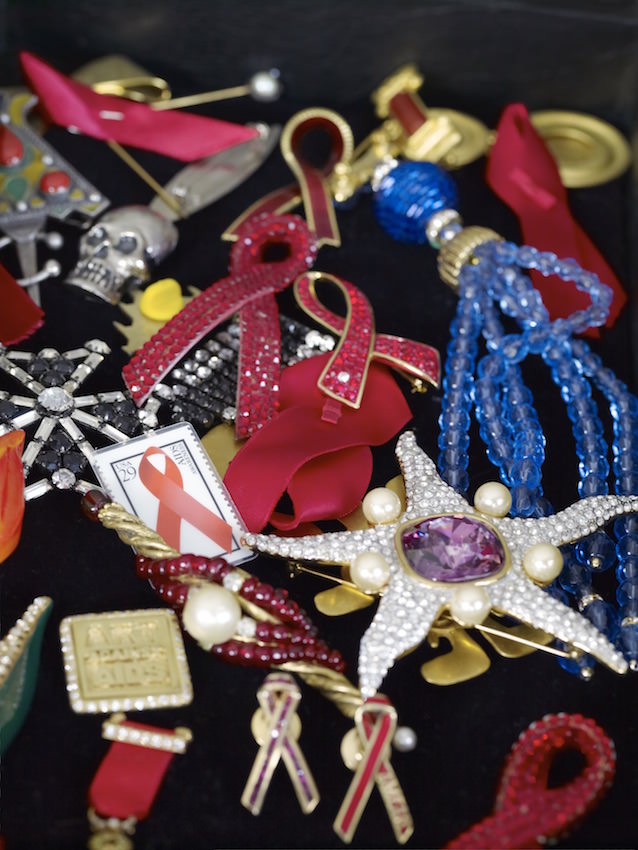
©Catherine Opie
Courtesy of Regen Projects, Los Angeles and Lehmann Maupin, New York & Hong Kong
For me, photography will always act as a place of creating history. With Taylor, I went in knowing that it was going to be a book and portfolio, so it’s about getting that kind of timing. With Taylor it’s really trying to take a notion of bearing witness and documentary but applying it to an idea of an extended portraiture through objects.
WW: Did her death in the middle of the project affect your approach?
CO: It was hard. Finally, one day with Tim [Mendelson, her assistant], because I kept going back to the house as it was fully getting dismantled, we were sitting in an empty closet that I had photographed before with all the clothes hanging [that was now empty], and I just looked at him as he was putting hangers into a box, and we both started crying. I said, “I’m not coming back here anymore. It’s done.” I think that I stayed because I became part of that group of people at that intense time and, in a way, because I didn’t know Elizabeth and I wasn’t employed by her, we had this really, wonderful sweet relationship where I was a little bit of an emotional breaker for them. [They could think] “Oh, Cathy is here, we don’t have to be so intense about this grief and this loss.” And I was still making pictures, and that was a way for them to hang on to this memory as well.
WW: You were there for six months. It seems only natural that you developed a relationship with the staff.
CO: It was a very intimate environment. I tried to get that within the project, it is not a catalogue or an archive, that it is a portrait. Even though I was mapping out her objects to a certain extent, I was also trying to make sure the human is in those objects. So when you are looking at her dressing table or the note written in lipstick on the mirror or the dog-eared remote-control manual on the side of the bedside table, those are really important human moments for me.
One of my favorite ones is the Louis Vuitton suitcase with the “MINE” tag on it. There were all these laminated lavender tags with “ET” and the number of the Louis Vuitton luggage and this one labeled “MINE” is so utterly human. I can just see her saying, “I want laminated tags in lavender.” [Laughs] Not that I knew her, but I would imagine that she thought that was funny, you know? Also, the photo of the Chanel shoes, even though they are in every color, it’s also Fang—the photo is also about the cat in the picture. And those things allow it to be human.
WW: Few of the photos are of a room as a whole, but more a close-up of the sleeves on her dresses in the closet, or a bedside table. Why did you stay away from wider shots, for the most part?
CO: I think that frustrates some people about the book, and of course I’ve checked the Amazon reviews just out of curiosity. [Laughs] It frustrates people that they are not captioned, that they don’t know what each piece of clothing is. And why did I make blurry photographs? And why are there pictures of drapes close up? People really wanted wanted a tell-all. There is an intimacy to this body of work because the titles are super-super-simple. You get a hint of what you’re looking at, but it’s not all laid out with the kind of personal stories that one wants to hear or often reads about in terms of trying to seek the private life of the movie star. So there is a place in which it’s public, but it’s also private within this body of work, and I like how it bounces back and forth on those places.
WW: Was there anything when you first arrived that struck you about her home?
CO: Well, it was smaller than I had anticipated. I thought it was going to be one of these grand houses of the kind of most famous movie star of our time. And it was a grand house at the time she got it. But grand houses have really changed in L.A., and I could tell that she really wanted it to be a family home. The pool, which I don’t have a shot of, but all the tiles were done by a family member and installed. All the horse sculptures on the shelf in her living room were made by her daughter. There was a lot of art and personal things that people made for her or brought to her, and they all held meaning. It’s kind of about the democracy of the objects, too. Meaning can be in something as valuable as the Krupp Diamond that Richard [Burton] gave her, but also for her it was about this love of objects and the way that she valued the things that were brought to her.
WW: Speaking of the Krupp Diamond, how did you go about photographing her famous jewelry collection?
CO: It was the last day the jewelry was in the house, and Christie’s was coming to take it away. I went over early in the morning with Tim and Barbara and her son Chris, and we pulled a couch cushion out and let the jewels be in the sun, just one last moment of their sparkling glory to shine back up to Elizabeth. She made an incredible jewelry book that was very well photographed, and so the jewelry photographs for me, being blurred, just end up being these more metaphorical moments of what memory is and what passing is. Also, she had an idea with the jewelry book to have like the cliché sparkle of the jewels, so [for this project] by racking the photo and the lens I got that utter sparkle of the jewels. We were laughing about how Elizabeth would have liked that.
WW: It’s almost like, in a sense, you were able to capture a bigger truth from this indirect portrait.
CO: I would argue that this is a truer portrait than a single photo of a person who sits for me. There is way more information in this than you can ever gain than from staring at somebody’s face. But I obviously love staring at people’s faces, too. [Laughs]
I’m doing a portrait class right now for UCLA. I showed them 800 images yesterday. I was just going through A to Z a little bit of a fast history of portrait photography, and whenever you give those kinds of lectures it really makes you think about your own practice. It’s nice to think about before I’m headed to New York for these openings.
WW: So what about the portrait series you showed at Lehmann Maupin and at the Hammer, portraits of people like Glenn Ligon, John Baldessari, Laura and Kate Mulleavy, Jonathan Franzen, and others against a black background. How did that begin?
CO: I think it began because of questioning where photography is at this point. This body of work is trying to reach back to a certain idea of the history of portraiture. There were two shows that I saw in London, one was the da Vinci show at the National Portrait Gallery. And I directly left that show and walked over to the Richter show at the Tate. His abstract landscape and his abstract paintings were with the portraits, and it really made me think about how Richter uses photography and the importance of photography within his work, and where photography is right now with the very saturated social media platform of images. [I was thinking about] how we get people to pause, to quietness, to the moment the idea of allegory that might make sense or not make sense.
So this body of work is really looking at artist friends that I respect, as well as other people that I’ve wanted to photograph. And there are more that I want to photograph. I’m dying to make that Joan Didion photograph.
WW: Oh, that would be amazing!
CO: I’ve been working at it for four years to get her to sit for me! I don’t know if it’s going to happen, but I’m going to keep working on it.
I just really like the fact that with the new body of work, it’s not so much the politic of representation, which really has occurred in much of the other portraits I’ve made during the last 25 years. And that it has more to do with desire, and looking, and pausing, and thinking about the figure and the light emerging from the black.
WW: Right, what made you choose that super-black background?
CO: I call it my cognitive body of work. It’s really mental. It’s sublime, and mental—it’s really personal. And it probably has more to do with me than anybody else. It’s this internal state for me in making these. The pictures are of people that I really respect.
WW: The portraits are so formal. How did you pose them? Franzen we see over his shoulder reading—
CO: War and Peace, which he was reading really heavily before writing Freedom. That’s a little bit of the allegory. The Rodarte sisters, that’s a blood drip. There is blood throughout the body of work, because I’m basically postmenopausal, so I’m thinking about blood again. I don’t have blood in my life in the same way like the earlier cutting self-portraits or pushing my body to the extreme anymore. I’m almost 55 years old, so things have changed. I was really thinking about the body in this work and blood and what it means to age, what it means to long, and create something that is sublime. It really is more to do with everything that is going on internally versus, as I said, making some kind of identity politic images.
But it’s also about a love of looking. You look at the portrait of Kara Walker or Chuck Close, Matthew Barney. I mean, these are people who have been in my life for a really long time, not necessarily as close friends, but as people that we’ve all grown up in this art world together. Or there’s mentors, like the portrait of John Baldessari. It’s one of the most beautiful portraits for me in the series because it is about this marker in our lives and passage of time.
WW: There is a real tenderness there.
CO: I would hope so. I think my earlier portraits are way more intense. These are about looking. The other ones were about looking back at you and saying, “Yeah, we’re here, we’re queer, fuck you.” [Laughs] There’s not really a “Fuck you” in this body of work. [Laughs]
WW: In what ways did you explore the idea of blood in this portrait series?
CO: Well, with Julie and Pigpen, these are people who have appeared in my images especially throughout making bodies of work. So I wanted that closeness of the relationship because they were best friends, and they have been together now as a couple for years. You can’t ask every friend to bleed for you, but there are certain friends that will bleed for you. Because of the blood metaphor and menopause, their intimate kiss, that during my era of growing up when blood was also so dangerous in terms of AIDS, it’s a sweet moment of allegory for me.
And then my trainer, I worked out with this guy for four years; we did pretty intense CrossFit training. I’ve always been working on making my body fit, even though it doesn’t appear to be, I am. [Laughs] I was working out with him when I went through menopause. So it’s a photograph where he is nude and he is covering his penis and there is blood on his hand, and he is looking down in a peaceful way. Because he was so intimate with my body, and I really don’t have men being intimate with my body, I kind of made him bleed for me. There are slight moments of narrative for me that occur in the work, and there are other moments about the longing and looking and capturing and making portraits.
WW: Earlier you mentioned a lecture you gave yesterday at UCLA. You have been teaching for a long time. How do you think that constant aspect of education affects your work?
CO: Well, I think it allows me to convey the history of photography as well as art. I do like creating passion for people. I like being able to say, “No, it’s okay not to be cynical, you don’t have to be cynical to be an artist. It’s okay to actually really love and value what you’re doing and do it with some passion.”
This article is published in Whitewall‘s spring 2016 Art Issue.








